May 16, 2023
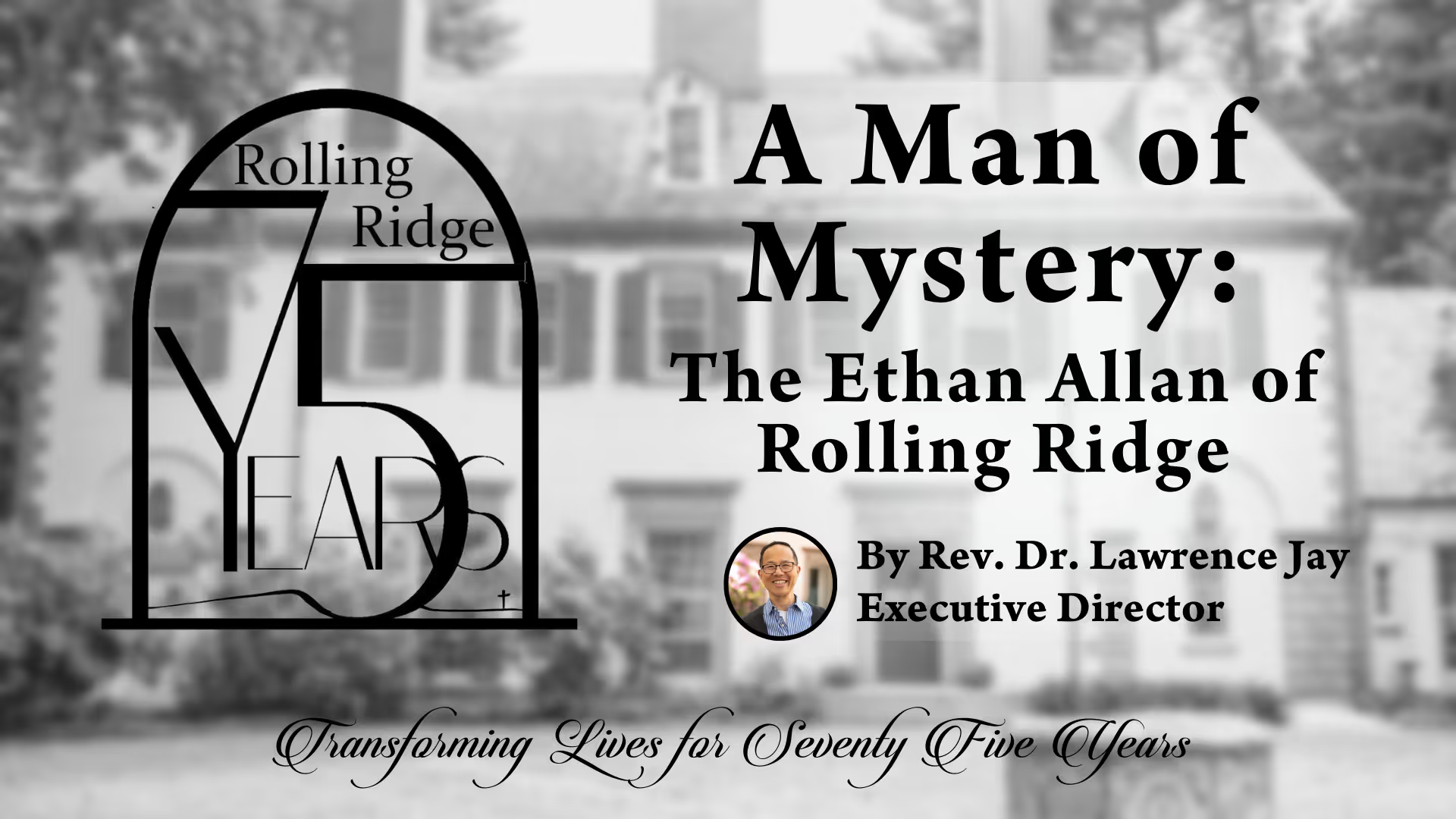
As Rolling Ridge celebrates 75 years of ministry in 2023, we continue a monthly series on the second Tuesday of the month to share our history. While the Ridge has been sacred space as a retreat center since 1948, the origin story of the property begins in 1899 and is shrouded in mystery. Historical records may offer key details, but they are subject to interpretation especially as related to the man who began it all – Ethan Allen.
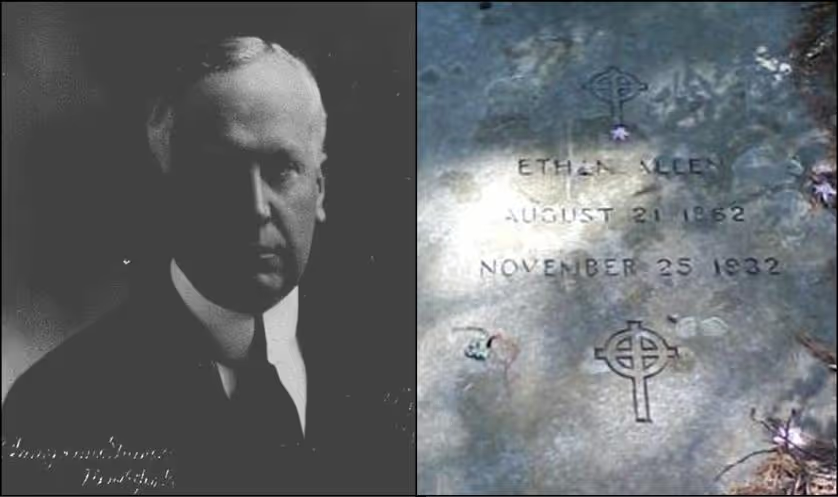
Word association. “Ethan Allen.” Typical response. “Furniture.”
But for the staff at Rolling Ridge, word association with “Ethan Allen” would be “a rich wool merchant from New York.” For Rolling Ridge, Ethan Allen (not the contemporary furniture company but the historical person) is foundational to our origin story. If it wasn’t for our Ethan Allen (1862-1932) purchasing 38 acres along Lake Cochichewick to build a summer home, Rolling Ridge would never be. Yet for 75 years, the question remains, who is the Ethan Allen of Rolling Ridge?
Very little is known of our Ethan Allen. Born in New York in 1862, he is referred to as “a wealthy New Yorker,” who owned a woollen company. In 1890 he married Alice Ransom Bigelow, and together they had two children, Horace, born in 1892 and Alice, born in 1899.
1899 saw another birth – the birth of Rolling Ridge in North Andover, Massachusetts as Allen bought 38 acres of land along the shore of Lake Cochichewick from farmer Winfield Scott Hughes. Hughes, who purchased the property in 1881, chose to divide his 45 acre farm, keeping a homestead lot for himself south of Great Pond Road, and then selling the lot extending from the road to the lake to Allen for a summer home. The plot included the “islands,” which Hughes had purchased years earlier. (See last month’s blog on the history of the land before Ethan Allen.)
It is unclear if Ethan Allen named the land “Rolling Ridge” or if that is how Hughes referred to his farm. What we know is that the earliest architectural plan bears the name that has endured for the past 124 years. The original plans for the grounds included a tennis court, an outdoor theater, and a nursery, which were never built.
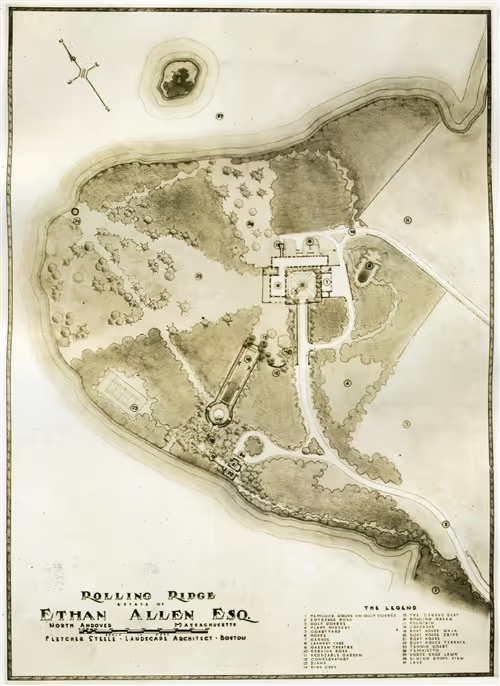
The plans drawn up by landscape architect Fletcher Steele refer to the “Rolling Ridge Estate of Ethan Allen Esq.” History has no record of why Allen was referred to as “esquire” as he is never noted as being a lawyer or having noble ancestry from the UK. This is part of the Ethan Allen mystery.
Another aspect to the mystery is how this New Yorker came to discover North Andover, Massachusetts. We know that he and presumably his family summered in the area for many years, but there is no surviving record that makes the initial connection between him and the area, just a few historical facts that create a potential picture.
One picture is rooted in Allen’s profession as a wool merchant. With the history of textile mills shaping the history of North Andover, one unpublished theory connects Ethan Allen with Moses Stevens, who oversaw “the Stevens textile mill empire up and down the east coast.”
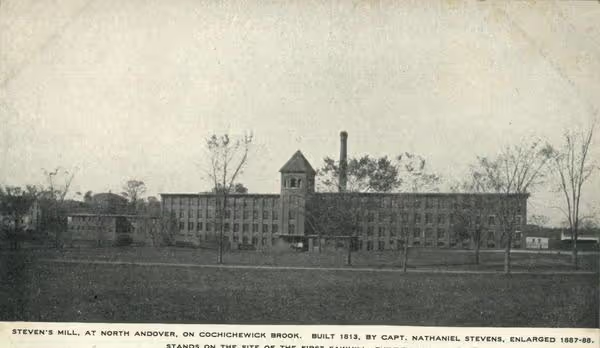
In 1886, Stevens built an estate on Osgood Hill, on the other side of Lake Cochichewick. With Stevens and Allen both textile merchants, it is possible that they could have met in New York for business, with Stevens inviting Allen to visit North Andover, to stay at his magnificent mansion, and to enjoy one of his famed, spectacular garden parties. With such an influential local connection in Stevens, Allen would have had some inside information when the Hughes farm went up for sale in 1899.
While this professional link between Ethan Allen and North Andover is shrouded in conjecture, it may be the personal links of Allen’s wife, Alice (1865-1913), reflected in the historical record, that provide a more realistic picture.
In 1889, Alice’s older brother, Louis Sherrill Bigelow, married Mary Frances Russell, who was the daughter of William Augustus Russell, a paper manufacturer and US Congressman. Although Russell lived in Boston, he also maintained Lakeview Farm as a home in North Andover, which is today Brooks School on the other side of Lake Cochichewick at 1160 Great Pond Road.
We imagine Mary Frances, who was born in Lawrence, telling her sister-in-law Alice about how beautiful her family farm in North Andover is and inviting the family to visit. With Alice originally coming to New York from Minnesota, the "Land of 10,000 Lakes," a house on Lake Cochichewick would have been enticing as Alice was raising her family in Manhattan. With Mary Frances and Louis purchasing the Foster Farmhouse at 808 Great Pond Road, news of the sale of the Hughes farm would have reached the Bigelows, who passed it along to the Allens. By purchasing the land and building a summer home at 666 Great Pond Road, Alice would be near extended family. A fairly reasonable explanation for why a rich wool merchant from New York would build a summer home in Massachusetts.
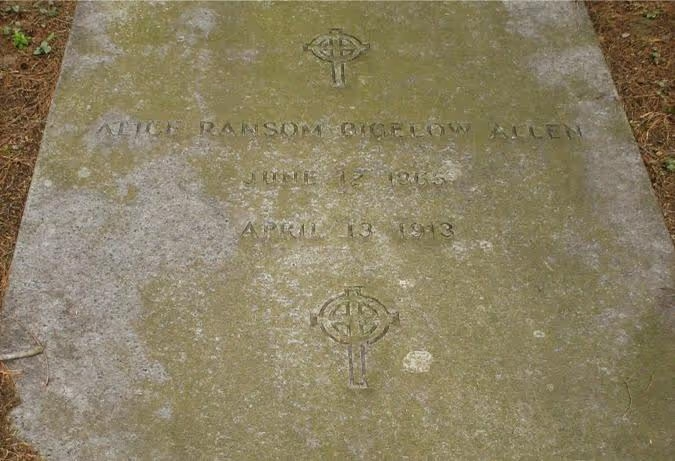
Unfortunately, Alice never saw the completion of their North Andover summer home as she died of nephritis in 1913 at the age of 47. The records are unclear as to whether she died in New York or North Andover, as the reports conflict. We want to believe that Alice died in the home of her brother, along the shore of Lake Cochichewick where she and her husband, Ethan, first dreamed of building a home in 1899. With groundbreaking at the Ridge not occurring during Alice’s life, was her battle with nephritis the reason why there was such a long delay in construction? We will never know for sure.
With her parents dead and two other brothers still in Minnesota, we assume that Alice must have loved the area and was close to Louis and his family so that Allen made the decision to bury his wife in North Andover at the Ridgewood Cemetery.
In many ways, the construction of Rolling Ridge could be seen as Ethan Allen’s tribute of love to his wife, Alice, as the gardens were planted in 1915, two years after her passing, with groundbreaking of the mansion in 1919. It is a romantic origin story that could explain the history of the house. Maybe the house has been historically pink because Alice loved pink. Maybe the elaborate gardens were planted because Alice loved gardens. Maybe the grounds are covered with rhododendrons because they were Alice’s favorite. We will never know any of this for certain, but it is a beautiful story of a property planted with love. Maybe that is why so many people have fallen in love here at the Ridge.
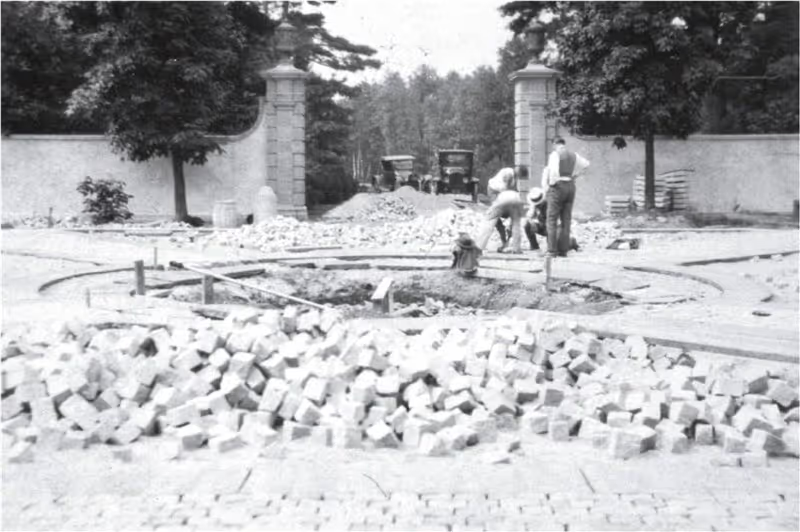
Although Allen invested huge financial resources to build Rolling Ridge near his wife’s family, he eventually married Elizabeth Gray of New York who was almost 30 years younger, close to the age of his children. It is unclear if Allen, his second wife Elizabeth, and the children of his first marriage spent time in Massachusetts after Alice’s passing. We know very little about this chapter of the story. We do know that Allen’s daughter married Mary Frances’ much younger stepbrother Richard Spofford Russell and that they made their home at Lakeview Farm in North Andover. Why Rolling Ridge was not kept in the Allen family is another mystery.
Tradition holds that Ethan Allen never lived at Rolling Ridge. Maybe it was the pain of a love lost with Alice that kept him from ever spending time in a place we believe she loved. Sadly, Allen became mentally ill, suffering from “involution melancholia” and eventually forced to retire. This is the reason given for why the property was placed into a corporation in 1926 with the Rolling Ridge estate being sold to widower Russell Tyson of Chicago, who became the first occupant of the mansion in 1928.
By 1931, Ethan Allen was a long-term patient at the acclaimed Brattleboro Retreat in Vermont. He died there in 1932, and is today buried next to his first wife, Alice, with an Allen Family bench in Ridgewood Cemetery, under a tree, for reflection. The final resting place of Ethan and Alice has the two together in North Andover, an area which they loved and dreamed of building a home and a future that was cut short by death.
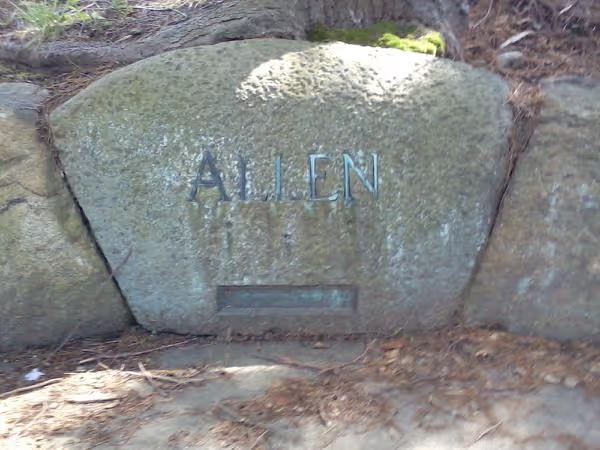
While the origin story of Rolling Ridge from the historical record could be seen as a tragic love story of Ethan and Alice Allen, of a family vision never fulfilled, it is a story shrouded in mystery. There are more questions than answers. Period. We want to believe however that it is the love of Ethan for Alice that led to every decision on the grounds that we love today. Next time you are here, enjoying the beauty of the Ridge, know that you are now the heir of the vision of Ethan and Alice Allen whose love for North Andover began it all in 1899, here on the shore of Lake Cochichewick.
